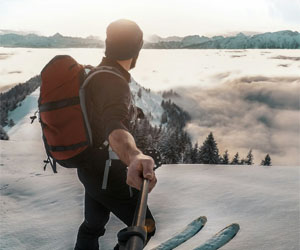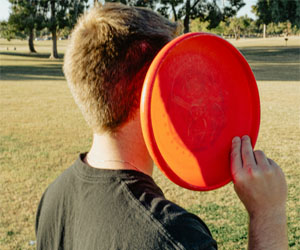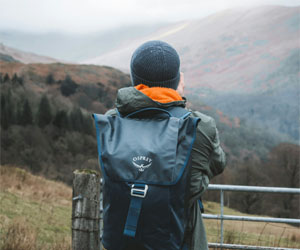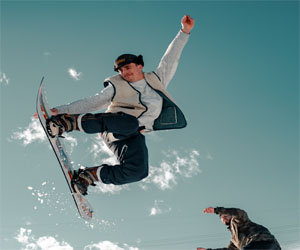


Navigating The Thrills Of The Game

In the heart-pounding world where strategy meets adrenaline, paintball is more than just a recreational pursuit; it's a captivating adventure full of challenges and excitement. The game of paintball presents players with a unique set of adventure challenges that demand not only physical prowess but also strategic thinking, teamwork, and quick reflexes. In this article, we will explore the various paintball adventure challenges that players encounter, making the game an exhilarating and unforgettable experience.
1. The Element Of Surprise
One of the core adventure challenges in paintball is dealing with the element of surprise. Paintball fields are designed with a variety of obstacles, terrain, and hiding spots, creating a thrilling environment where players must constantly stay alert. The challenge lies in anticipating your opponents' movements, knowing they could pop up from any direction at any time.
2. Tactical Maneuvers
Paintball adventure challenges often require tactical maneuvers to outsmart opponents and gain the upper hand. These maneuvers include flanking, taking cover, and setting up ambushes. Strategic thinking is essential to overcome your adversaries, seize key positions, and achieve objectives.
3. Objective-Based Challenges
Many paintball games involve specific objectives, such as capturing flags, defending positions, or retrieving items from the battlefield. These challenges add a layer of complexity to the game and demand teamwork, communication, and precise execution to succeed.
4. Ammo Conservation
Paintballs are a limited resource, and players must strategize to conserve their ammunition. Running out of paintballs can leave you vulnerable, so managing your shots effectively is a critical challenge in paintball adventures.
5. Precision Marksmanship
Achieving precision shots is not just a tactic; it's a significant challenge. Hitting your target requires excellent marksmanship skills, steady aim, and the ability to calculate trajectories, making every shot count.
6. Team Dynamics
Team dynamics is a fundamental challenge in paintball adventures. Players must work together seamlessly to coordinate their actions, communicate effectively, and support each other. Effective teamwork can make the difference between victory and defeat.
7. Tactical Adaptability
Adaptability is a key adventure challenge in paintball. The game can evolve rapidly, and players need to adjust their strategies on the fly. Being flexible and responsive to changing situations is essential for success.
8. Mental Resilience
Paintball adventure challenges often test a player's mental resilience. Staying focused, managing pressure, and remaining calm under fire are crucial to maintaining peak performance and overcoming obstacles.
9. Environmental Factors
Weather conditions, terrain, and field layout can present additional adventure challenges in paintball. Adapting to adverse weather, navigating rough terrain, and using the environment to your advantage are all part of the game.
10. Psychological Tactics
Psychological challenges play a role in paintball adventures as well. Players can employ mind games, distractions, and strategic communication to unnerve their opponents and create opportunities for success.
In the world of paintball, adventure challenges are an integral part of what makes the game so exhilarating. Players face a combination of physical, strategic, and mental obstacles that keep the adrenaline flowing and the excitement high. It's the art of navigating these challenges and emerging victorious that makes paintball an unforgettable adventure for enthusiasts around the world. So, gear up, embrace the challenges, and embark on your own paintball adventure for an adrenaline-fueled experience like no other.
Understanding The Risks Of Sports-Related Injuries
 1. Acute Trauma: One of the most immediate risks in sports is acute trauma, which includes injuries such as fractures, dislocations, and concussions. These injuries often occur as a result of sudden, forceful impact and can have severe consequences if not promptly addressed.
1. Acute Trauma: One of the most immediate risks in sports is acute trauma, which includes injuries such as fractures, dislocations, and concussions. These injuries often occur as a result of sudden, forceful impact and can have severe consequences if not promptly addressed.
2. Overuse Injuries: Overuse injuries are another common risk in sports. These injuries develop gradually from repetitive stress on a particular area of the body. Overuse injuries can affect tendons, muscles, and joints, leading to conditions like tendinitis, stress fractures, and muscle strains.
3. Sprains And Strains: Sprains and strains are frequent sports injuries. Sprains involve the stretching or tearing of ligaments, while strains affect muscles or tendons. These injuries often result from improper technique, inadequate warm-up, or overexertion.
4. Dislocations: Dislocations occur when a bone is forcibly pushed out of its joint. Sports that involve sudden impacts or falls, such as football or basketball, carry a higher risk of dislocation injuries.
5. Stress Fractures: Stress fractures are hairline cracks in bones that typically result from repetitive, high-impact activities. Runners, gymnasts, and dancers are particularly susceptible to these injuries.
6. Concussions: Concussions are a type of traumatic brain injury often caused by head impacts, common in contact sports like football and soccer. Proper diagnosis and management of concussions are critical to avoid long-term consequences.
7. Contusions And Bruises: Contusions, commonly known as bruises, are injuries that result from blunt force trauma. While not usually severe, they can be painful and temporarily limit performance.








The Journey Into Nature's Uncharted Realms
 Preserving Pristine Beauty: Exploring untouched terrains comes with a profound responsibility: preserving the pristine beauty that makes them unique. Those who venture into these areas understand the importance of minimizing their impact, adhering to Leave No Trace principles, and becoming stewards of the environment.
Preserving Pristine Beauty: Exploring untouched terrains comes with a profound responsibility: preserving the pristine beauty that makes them unique. Those who venture into these areas understand the importance of minimizing their impact, adhering to Leave No Trace principles, and becoming stewards of the environment.
Remote And Rugged Landscapes: Untouched terrains are often found in remote and rugged landscapes. These areas are typically far from the conveniences of modern civilization, making exploration an adventure in itself. Whether trekking through dense rainforests, traversing arid deserts, or summiting towering peaks, the journey is as much a part of the experience as the destination.
Wildlife Encounters: Exploring untouched terrains often leads to remarkable wildlife encounters. These areas are havens for diverse and often rare species of animals and plants. Observing these creatures in their natural habitats is a privilege that fosters a deep connection with the natural world.
Challenges And Self-Discovery: The challenges posed by untouched terrains are opportunities for self-discovery. Navigating rough terrain, facing unpredictable weather, and dealing with unforeseen obstacles are part of the journey. These experiences test one's resilience, resourcefulness, and adaptability.
Silence And Solitude: In untouched terrains, silence is your companion, and solitude your confidant. The absence of human-made noise allows for a deeper connection with the natural world and provides an opportunity for introspection and reflection.
Advanced Techniques For Snowboarders
 2. Riding Switch: Riding switch, also known as riding fakie, is the art of snowboarding in the opposite direction from your regular stance. To become an advanced snowboarder, you should be comfortable riding switch. Practice riding with your non-dominant foot leading and work on your balance and control to improve your overall snowboarding skills.
2. Riding Switch: Riding switch, also known as riding fakie, is the art of snowboarding in the opposite direction from your regular stance. To become an advanced snowboarder, you should be comfortable riding switch. Practice riding with your non-dominant foot leading and work on your balance and control to improve your overall snowboarding skills.
3. Terrain Park Tricks: If you're aiming to take your snowboarding to the next level, consider venturing into terrain parks. Learn tricks like ollies, spins, grabs, and board slides. Terrain parks offer an exciting playground for advanced snowboarders, allowing you to express your creativity and style while navigating jumps, rails, and other features.
4. Off-Piste Riding: Off-piste or backcountry snowboarding takes you away from the groomed slopes and into the untouched, wild terrain. Before attempting off-piste riding, it's crucial to acquire the necessary avalanche safety skills and equipment. This advanced snowboarding technique opens up a world of exploration and adventure for those who crave more than just groomed runs.
5. Navigating Steep Terrain: Advanced riders can handle steeper slopes with confidence and control. To master steep terrain, work on your balance, edge control, and body positioning. Learn to initiate quick turns and control your speed, making descents on challenging slopes feel exhilarating rather than intimidating.
6. Powder Riding: Powder snow is a snowboarder's dream. To excel in powder riding, keep your weight centered, use a wider stance, and make fluid, surf-like movements.
Top Injury Prevention Tips
 3. Listen To Your Body: Paying close attention to your body is essential. If you experience pain, discomfort, or unusual sensations during a workout, stop immediately. Ignoring these warning signs can lead to injuries. It's okay to push yourself, but not at the expense of your health.
3. Listen To Your Body: Paying close attention to your body is essential. If you experience pain, discomfort, or unusual sensations during a workout, stop immediately. Ignoring these warning signs can lead to injuries. It's okay to push yourself, but not at the expense of your health.
4. Choose The Right Footwear: Invest in appropriate athletic shoes designed for your chosen activity. Ill-fitting or worn-out shoes can lead to discomfort, instability, and injury. Consult a specialist to find the right pair for your needs.
5. Cross-Training: Variety in your workouts is a key injury prevention strategy. Cross-training involves engaging in a mix of activities, which helps avoid overuse injuries. For example, if you're a runner, consider adding swimming or cycling to your routine.
6. Strength And Flexibility Training: Incorporate strength training and flexibility exercises into your fitness plan. Building muscle and improving flexibility can enhance your overall performance and reduce the risk of injuries.
A Sport With A Winning Combination
 Accessibility: One of the most significant advantages of pickleball is its accessibility. The game's court dimensions are smaller than those of traditional tennis, making it an ideal choice for people of all ages and physical conditions. Whether you're a child, a senior, or somewhere in between, pickleball offers an inclusive and welcoming environment. The sport accommodates various skill levels and abilities, ensuring that everyone can participate.
Accessibility: One of the most significant advantages of pickleball is its accessibility. The game's court dimensions are smaller than those of traditional tennis, making it an ideal choice for people of all ages and physical conditions. Whether you're a child, a senior, or somewhere in between, pickleball offers an inclusive and welcoming environment. The sport accommodates various skill levels and abilities, ensuring that everyone can participate.
Social Interaction: Pickleball is as much a social activity as it is a sport. The game's format encourages interactions and fosters a sense of camaraderie. Many players join local pickleball clubs, groups, or leagues, providing opportunities to connect with others who share their passion for the sport. The social aspect of pickleball strengthens community ties and often leads to lasting friendships.
Physical Fitness: Playing pickleball is an excellent way to stay physically active and maintain overall health. The sport involves continuous movement, from quick lateral shifts to agile net approaches, which provide a cardiovascular workout and promote agility. Regular play helps improve balance, coordination, and endurance, making it an effective way to enhance one's physical fitness.
Mental Stimulation: Pickleball offers both physical and mental stimulation. Players must strategize, anticipate their opponents' moves, and make split-second decisions. This mental engagement contributes to improved cognitive function and keeps players sharp as they age.
Short Learning Curve: Pickleball has a relatively short learning curve compared to other racket sports. Newcomers can quickly grasp the basic rules and techniques, allowing them to enjoy the game without prolonged training periods. This accessibility and ease of learning make pickleball particularly appealing to beginners.